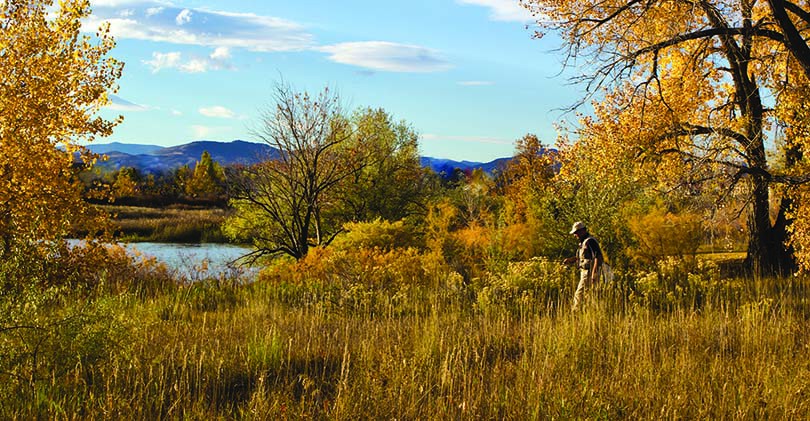By Dennis Smith
October may be an odd time of year to be thinking about fly fishing for carp, but I met a guy last week who fishes for them year-round and who said he’d rather catch carp on a fly than win the Florida Lottery. At first I thought he was joking, but then he is a fly fisherman, so there’s a chance he was serious. Either that, or he’s slightly crazed.
“They’re big, smart and spookier than a sack full of Halloween cats,” he said. Then he added, “A carp in clear water is as much fun to take on a fly as any trout, and a lot more difficult to approach.” If you ever tried to put the sneak on a big old carp tailing in the shallows, you know exactly what he means; more often than not, you’re greeted with a swirl the size of a bathtub and a humiliating cloud of mud trailing off in the vague direction of never-never land before you ever get to cast your fly.
It’s not for nothing fly-fishing for carp has been compared to fishing for bone fish on the Caribbean flats — without the tropical breezes, of course. He made that point by saying he’s done both and it’s a fair comparison. “Carp aren’t as fast as bonefish,” he said, “But they’re every bit as powerful and just as tenacious. They won’t smoke your reel with line-blistering runs like bonefish do, but neither will your average bass or trout. And carp fight harder for a longer period of time than either of them.”
He said he’s taken carp on the surface with fluffy, white dry flies when they’re feeding on fallen cottonwood seeds, but it’s a short-lived, seasonal thing that lasts about as long as a green drake hatch in June. “By far, the most consistent way to take carp year-round on the fly is with a nymph pattern crawled slowly across the bottom in front of a feeding fish. It’s strictly a sight-fishing game with the odds loaded dramatically in the carp’s favor.”
He uses sink-tip lines, medium-weight fly rods in the 6 to 8 weight class, fluorocarbon leaders and a selection of fly patterns he developed exclusively for use on the big bottom feeders. The flies resemble a cross between a marabou crappie jig and a short-shanked woolly bugger tied with dumbbell eyes for weight. He substitutes rabbit hair for the marabou and ties them on small (size 10 or 12) hooks. Black, brown and dark olive are the best colors. Get your fly within a foot or two of a feeding carp, watch him inhale it and then hang on for a long, powerful fight. “It’s a gas,” he said.
On the one hand, I can appreciate his passion for the game, but forced to choose between $40 million of lottery winnings or a day of wading a local farm pond with a fly rod, I’d probably opt for the money. On the other hand, I stand a far better chance of catching a carp, so I’m headed for the farm pond.

